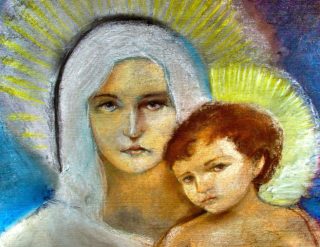
It started with Jesus. And the Gospel of Luke is a well-written account of highlights from the life and ministry of Jesus, from his birth in what amounts to a barn, to his death on a Roman cross, followed by his resurrection and his ascension into the sky.
Luke never met Jesus, as far as we can tell. But he got his information like a news reporter does: “I’ve carefully researched what happened since it all started” (Luke 1:3).
The book sounds like something a medical doc would write. Of the Bible’s four accounts of the life of Jesus (Matthew, Mark, and John are the other three), Luke gives us the most detailed report about the birth of Jesus. Luke is also the only one who reported Jesus’s story about a good Samaritan man who gave medical treatment to a Jewish man who had gotten mugged on the badlands road between Jerusalem and Jericho.
Writer
Anonymous. Early Christian writers say Luke wrote this book along with its sequel, the book of Acts. Luke, who wasn’t Jewish, traveled with the apostle Paul on mission trips. Paul said Luke was a dearly loved doctor (Colossians 4:14). He may also have been the only non-Jew to write anything that ended up in the Bible.
Timeline
Luke covers the lifetime of Jesus, from about 4 BC to AD 33. It’s unknown when Luke was written. He started traveling with Paul a couple of decades after Jesus, in the AD 50s. Many Bible experts say Luke wrote his story of Jesus about the same time Paul wrote his last letters, around AD 60 to 62. Others say Luke wrote a decade or two after that.
 Location
Location
Luke begins his Gospel in Jerusalem, with the birth of John the Baptist. Then, after telling the now-famous story of Jesus’s birth in Bethlehem, Luke carefully traces Jesus’s adult years. Jesus starts his ministry in the small town of Nazareth, where his hometown people reject him. Then Jesus travels south through Samaria, where he tells many of the parables found no place else. His story ends in Jerusalem, where he is crucified and rises from the dead as foretold in the Jewish Bible. Luke will begin his sequel, the book of Acts, about the start of the church, in Jerusalem, the center of Judaism. From there, he will take the story outward to Judea and Samaria and on to the ends of the earth, represented by the city of Rome, which some at the time said was the center of the world.
Intended readers
Luke wrote the Gospel of Luke and its sequel, Acts, to a man known only as Theophilus. For more about him, see the related footnote in the Casual English Bible and the first discussion question in the Leader’s Guide.
Whoever Theophilus was, Luke’s Gospel seems to address Christians who were not brought up as Jews. One clue: its author avoids Jewish terms and he frequently explains Jewish customs. He also emphasizes Jesus’s acceptance of everyone, Jews and non-Jews, saints and sinners, men and women, and even people the Jews of Jesus’s day despised most: tax collectors and Samaritans.






